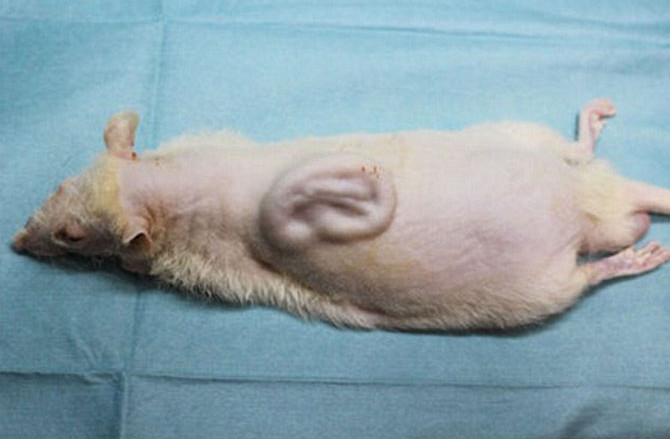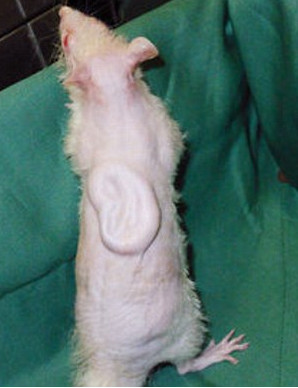Successfully nourish human ears on mice
For the first time in history, Japanese scientists have been able to use stem cell methods to successfully develop human ears on the back of a mouse.
Scientists from the universities of Tokyo and Kyoto in Japan said that the test results have opened up a new direction for world medicine. From the application of the test, the scientists hope to develop the human ear to serve many cases of facial deformity in battles or accidents, especially for people with deformities without ears. when born

Successful cultured ear parts will become a living organism.
In the United States, about 1 to 5 children are born with an ear defect or even without an ear.
According to DailyMail, the successfully grown ear organ becomes a living organism. Scientists say they used human stem cells - the host cell to turn them into cartilage cells. The cartilage cells in the lab will then look like a small balloon and be placed in a plastic tube shaped like a human ear.
To develop ear parts, scientists implanted a test tube into the skin of a living mouse. After more than two months of culture and development, the ear canal has gradually become accustomed to mice and grows about 5cm long. However, this is not the first time researchers have developed an ear component on the back of a mouse.
In 2013, a team from Massachusetts Hospital in Boston, USA, used the cow's collagen and cells from sheep to develop a titanium-based ear-shaped part of the body. people.

This is definitely a great progress in history if successful replication and safety.
This implant technique is currently being exploited to develop various body parts including the nose and windpipe. Previously, medical techniques all used implants from the ribs of the patient, causing many troubles and unnecessary costs.
Japanese researchers are hoping to conduct clinical trials in about five years. This will undoubtedly be a major advance in human history if successfully replicated and achieved near-absolute safety.
- New finding: Mice don't laugh with their mouth but with their ears
- The mole rats eat the mouse rat manure to get instructions for raising children
- Successfully cultivate human intestinal tissue on mice
- Create human ears with apples - The marvelous project of humanity
- Successfully cloned mice from a drop of blood
- Amazing things from ears
- See artificial ear from human ribs
- Reconstructing ears from patient cells
- Human brain cells are successfully implanted in mice
- Strangely, the mouse has giant ears
- How to handle when insects get into their ears
- China successfully cultivates and implants ears from cartilage cells
 Green tea cleans teeth better than mouthwash?
Green tea cleans teeth better than mouthwash? Death kiss: This is why you should not let anyone kiss your baby's lips
Death kiss: This is why you should not let anyone kiss your baby's lips What is salmonellosis?
What is salmonellosis? Caution should be exercised when using aloe vera through eating and drinking
Caution should be exercised when using aloe vera through eating and drinking